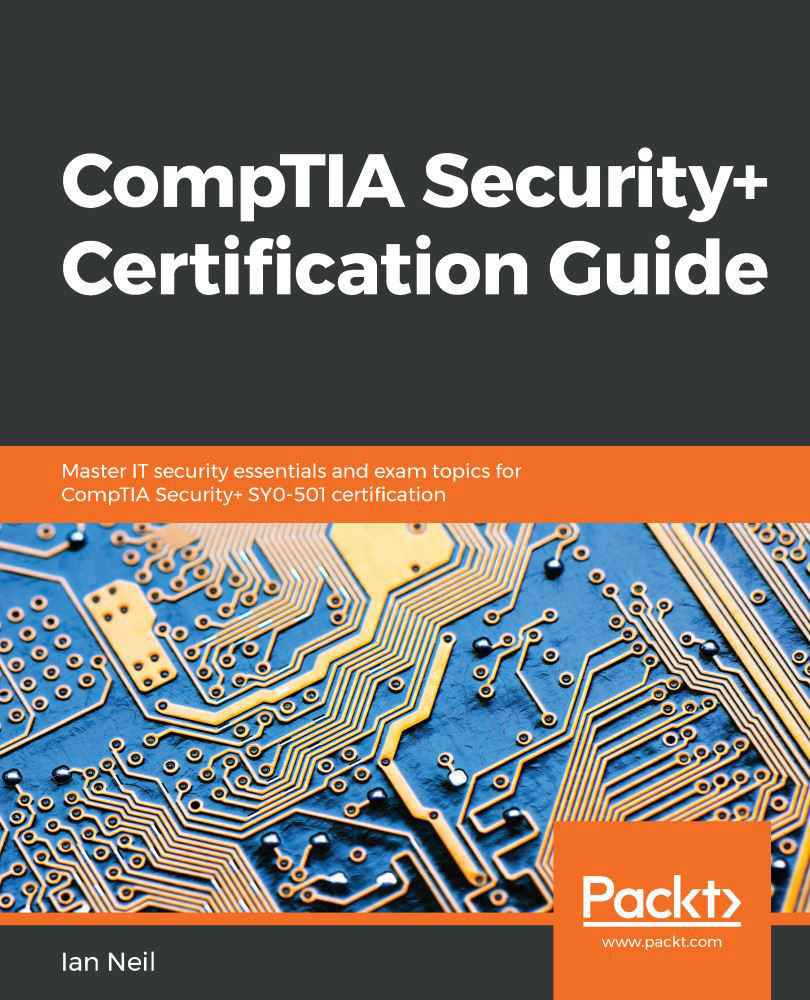Certificates are used for both encryption and authentication, and in this chapter, we are going to look at different encryption types and how certificates are issued and used. This is the most difficult module for students to understand, so we have focused on making the most difficult aspects seem easy. If you are going to be successful in the Security+ exam, you must know this module thoroughly. We will start with the Public Key Infrastructure (PKI), covering both the public and private keys. It is an asymmetric form of encryption.
We will cover the following exam objectives in this chapter:
- Comparing and contrasting the basic concepts of cryptography: We will cover symmetric algorithms, modes of operation, asymmetric algorithms, hashing, salt, IV, nonce, elliptic curves, weak/deprecated algorithms, key exchange, digital signatures...


